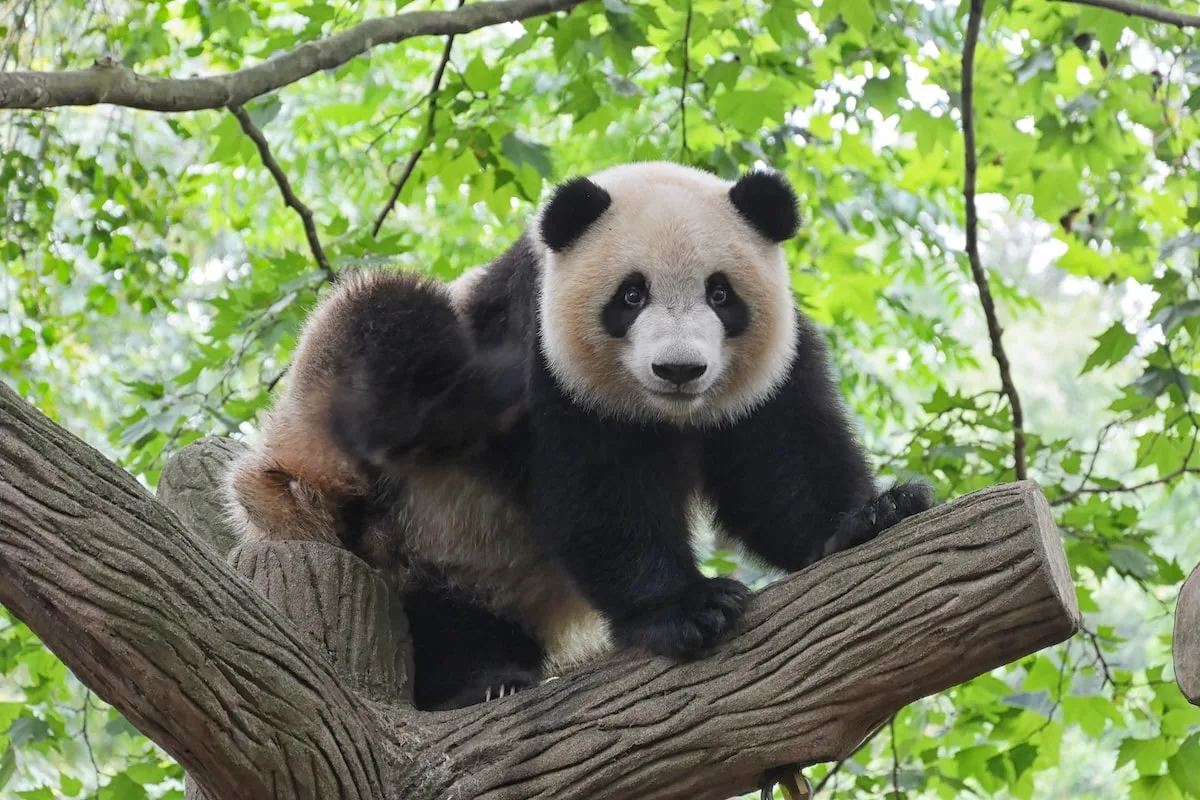Asia is the world’s most populous and rapidly developing continent. It is also where many wild animals currently face extinction due to human conflict. Here, we’ve listed the 23 most endangered animals in Asia.
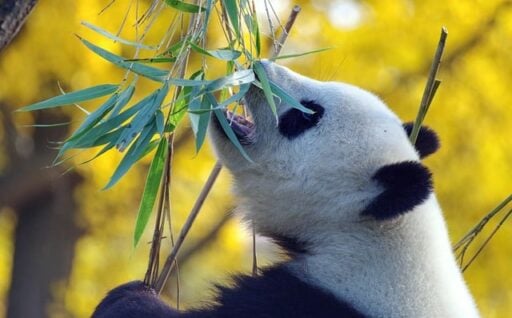
The overuse of land throughout Asia poses a significant risk to several animal species. Still, many Asian governments do far too little, far too late, to safeguard their landscapes and wild inhabitants.
There has been increased awareness of the dangers of excessive growth, and preservation strategies of many rare species, including tigers and giant pandas, all of whom would benefit from further targeted conservation projects.
Unfortunately, many other animal species are equally threatened and do not always receive the attention required to ensure their continued existence.
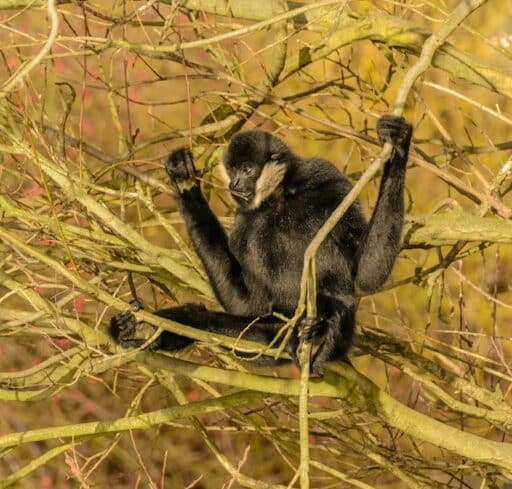
The International Union for Conservation of Nature (IUCN) is a non-governmental organization whose objective is to motivate and help nations all over the globe preserve their animal and plant biodiversity.
The IUCN collaborates with governments, researchers, and non-governmental international corporations. Together they attempt to preserve the complex ecosystems that keep the planetary ecosphere in balance.
Each life form has a position and role to play in the fantastic machine known as the world’s ecosystem. The extinction of organisms can have far-reaching implications for the remaining portion of the biome. For these reasons, it is really important that we raise awareness about the most endangered animals in Asia – and the rest of the world.
#1 South China Tiger
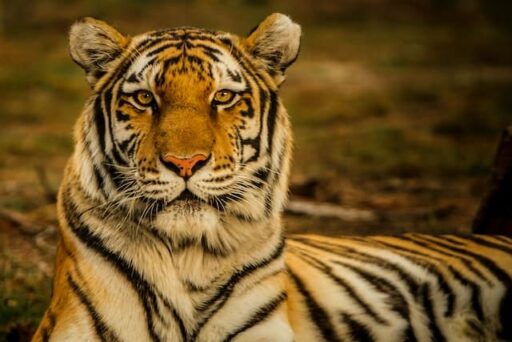
Scientific Name: Panthera tigris amoyensis
As stated by the WWF, this Asian tiger is on the verge of extinction. This species was initially discovered in parts of China. Approximately 60 of these big cats now live in Chinese zoos.
How uncommon is the South China tiger?
You can no longer find this tiger in the wild. This is primarily due to the region’s demolition of its natural habitats and illegal hunting. There were over 4,000 tigers in southern China in the 1950s, but by 1982, only 150-200 remained in a few distant mountain regions.
#2 Sunda Pangolin
Scientific Name: Manis javanica
Sunda pangolin is a member of eight species of the genus that you can encounter across all of Southeast Asia. This species is experiencing moderate to extreme extinction threats. Sunda and Chinese Pangolins are two of the most endangered wildlife species.
Sunda Pangolins are considered nearly extinct, making it one of the most endangered animals in Asia. This is primarily to blame for illegal hunting as they are frequently killed for their flesh and scales. People utilize it in traditional Chinese medicine, despite the absence of proof that they are impactful.
#3 Sumatran Tiger
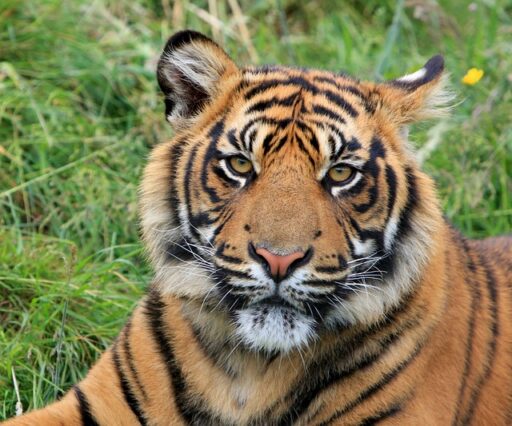
Scientific Name: Panthera tigris
This Sumatran Tiger inhabits the Indonesian Island of Sumatra, and the IUCN has included it on the red list of threatened species since 2008. Habitat loss due to the island’s palm oil industry development has caused significant challenges for their survival.
Prominent black stripes characterize their orange coverings. The Sumatran Island Tigers, approximated to number just under 400 today, are fighting for their lives in the island’s remaining patches of woods.
Because of intensifying cutting of trees and widespread illegal hunting, this noble creature, like its Javan and Balinese peers, could become extinct. Anyone caught scavenging tigers in Indonesia faces a prison sentence and stiff penalties. Such law enforcement is one way of aiding endangered animals in Asia.
Despite significant initiatives in tiger conservation, such as improved law enforcement and anti-poaching capabilities, a substantial market for tiger products and accessories remains. Sunda tigers are beginning to lose habitat and prey, and illegal hunting is a constant threat.
#4 Sumatran Orangutan
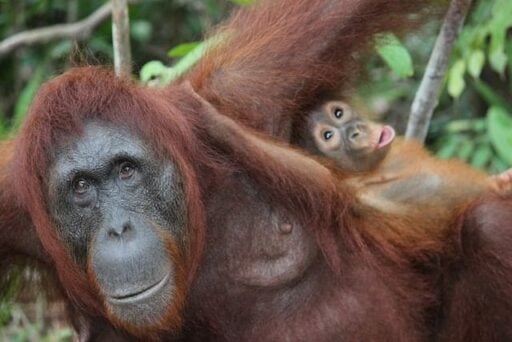
Scientific Name: Pongo abelii
The Sumatran Orangutan, which originated in Indonesia, has been deemed a vulnerable species by the IUCN. Especially poaching and habitat degradation are threatening the Sumatran Orangutan community. The World Wildlife Fund states, “of the nine current Sumatran Orangutan populations, only seven possess long-term viability possibilities, each of which comprises approximately 250 or perhaps more individuals.”
#5 White-Bellied Heron

Scientific Name: Ardea insignis
The white-bellied heron is also widely recognized as the imperial heron. It is a vast heron observed from India’s and Bhutan’s eastern Himalayan range to northeast Burma and Bangladesh. The white-bellied heron’s native habitat includes wilderness, waterways, and grassland. The survival of the creature is at risk due to property building, target shooting and trapping.
#6 Russian Sturgeon
Scientific Name: Acipenser gueldenstaedtii
This organism only reproduces in Iran, Kazakhstan, and a few regions in Eastern Europe. Fishing, underwater resource harvesting, and water contamination are some of the most immediate threats to the Russian Sturgeon.
#7 Eastern Black Crested Gibbon

Scientific Name: Nomascus concolor
This gibbon, also known as the Cao-Vit gibbon, is found in Southeast China and Northern Vietnam. Most people assumed that the gibbon population had depleted until 2000 when locals encountered a tiny community in Northeast Vietnam. However, it is still one of many highly endangered animals in Asia due to hunting and climate change.
#8 Red-Headed Vulture
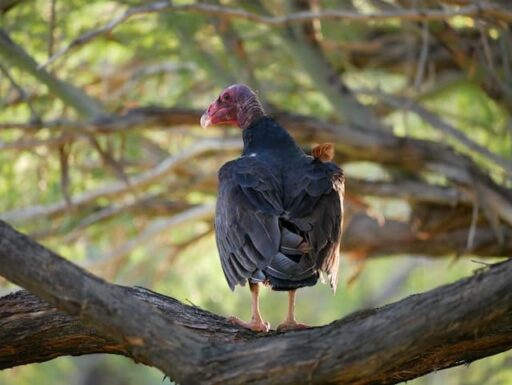
Scientific Name: Sarcogyps calvus
The existing breeding population in Asia is approximately fewer than 10,000 individuals, with only a few hundred in Southeast Asia and the remainder residing primarily in India.
Like other carnivorous predators, vultures are essential to the ecological system for feeding on dead animal carcasses. Consequently, their extinction has a significant impact on the global ecosystem.
The principal reason for the dramatic decrease in the red-headed vulture populations appears to be the utilization of diclofenac, a drug used to avoid colic in farm animals. The drug proved deadly to vultures that ate the meat of dead animals.
After diclofenac was prohibited, its substitute drug also resulted in the death of vultures. The remaining populations are less likely to be viable for the species’ survival.
#9 Snow Leopard
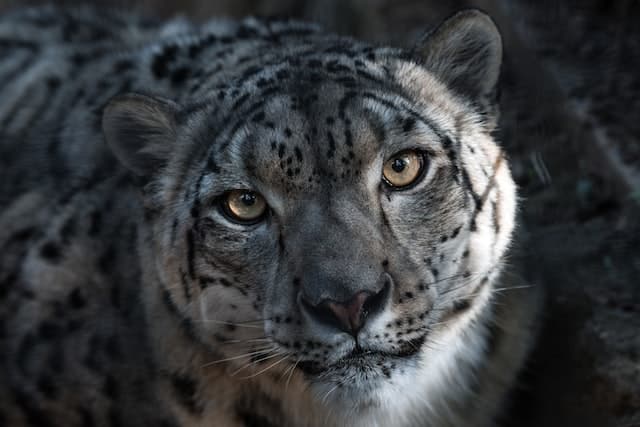
Scientific Name: Panthera uncia
Snow Leopards, apart from their significantly bigger cousin, the tiger, have almost no security in their natural habitats. The Snow Leopard’s native environment has an inextricable link to the grazing premises of its favored food source, which is also a territory landowners desire to utilize for livestock.
The decrease in prey animals because of competition with livestock causes leopards to turn to domesticated animals for nutrition. Taking livestock frequently results in farmer retaliation killing.
The Snow Leopard is also deliberately hunted for its fur, as well as other parts of the body, for use in Traditional Chinese Medicine. This is usually replacement for significantly rare tiger parts, such as the skeletal system, teeth, meat, and external genitalia.
Illegal animal hunting for entertainment purposes, such as circuses and zoos, is also dwindling wild populations.
A large portion of Snow Leopard’s native range throughout the Near East has become the site of significant armed confrontation in the last decade. Military action and refugee peoples’ demands for community resources have affected this species’ habitat.
#10 Bornean Orangutan
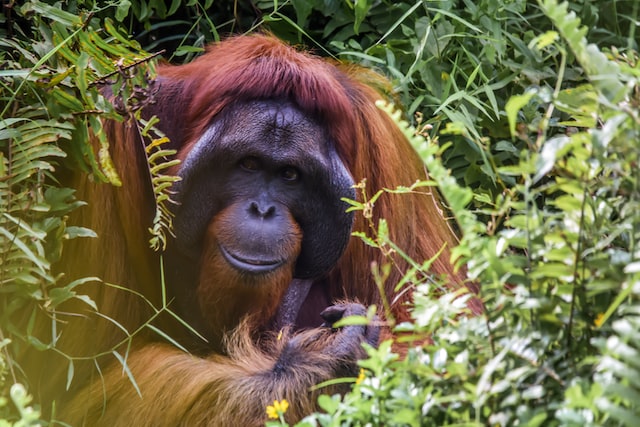
Scientific Name: Pongo pygmaeus
Over the last 60 years, Bornean Orangutan populations have diminished by over 50%. Similarly, the organisms’ habitat has decreased by at least 55%. It is definitely clear that they are one of Asia’s most endangered animals.
The Bornean Orangutan differ from the Sumatran Orangutan in looks, with a broader head, shortened beard, and slightly darker complexion. Three subspecies exist, each restricted to a different island portion.
The most endangered subspecies is the Northwest Bornean Orangutan. Its enclosure is severely impacted by deforestation and hunting, and only about 1,500 individuals remain. Many of the area’s habitats are small and segmented.
#11 Saiga
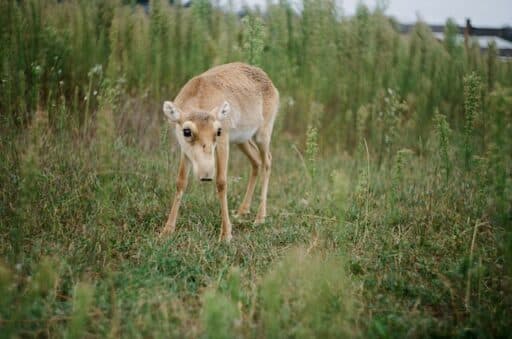
Scientific Name: Saiga tatarica
The native environment of the Saiga is grassland and desert. Saiga Tatarica is on the verge of extinction, and you can only find them in a few areas of Uzbekistan and Russia. Extreme weather events and high temperatures triggered by climate change have also affected its survival. Additionally, industrial agriculture and ranching are major issues threatening them.
#12 Green Sea Turtle

Scientific Name: Chelonia mydas
The Green Turtle, like other marine turtles, is a nomadic animal that travels the world’s oceans. Female turtles lay their eggs on soft pristine beaches and populate the coastal areas of at least 140 countries.
The most dangerous challenge to all marine turtles, including the Green Turtle, is deliberate human egg cultivation from nesting sites. They are also frequently caught unintentionally, or on purpose, by fishermen and killed for their flesh.
Human beachfront development often impacts directly on egg-laying areas, and the lights from beach cities can kill freshly hatched turtles by drawing them away from the water.
#13 Wild Bactrian Camel
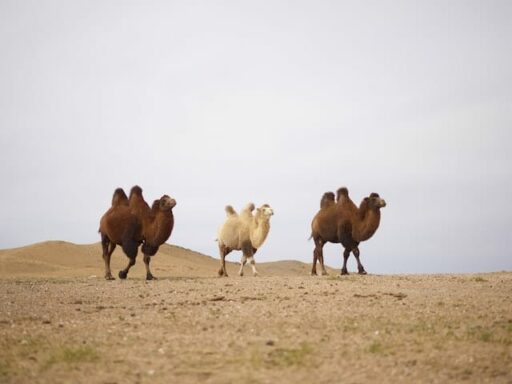
Scientific Name: Camelus ferus
Bactrian camels, as opposed to single-humped Arabian camels, have two different humps on their backs. This species lives in northern China and southern Mongolia. Residential housing, cattle breeding, and grazing all pose dangers to this species.
Extreme weather events in the Gobi have whittled down the amount of water accessible to camels, while predation by wild cats has continued to increase.
Annually, approximately 20 Bactrian Camels are deliberately killed by miners and poachers as they relocate across the Mongolian border into China.
#14 Lar Gibbon
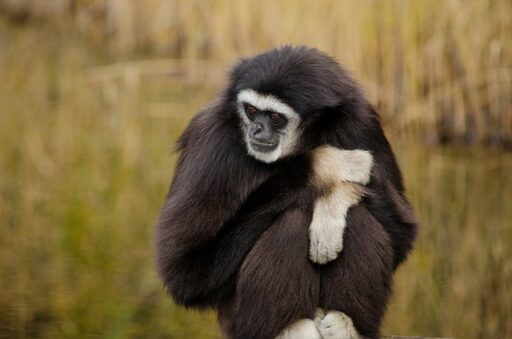
Scientific Name: Hylobates lar
Many gibbon species, including the Lar Gibbon, are currently endangered. Even though the danger posed by land clearing is diminishing, these animals are still excessively hunted for their animal flesh.
Gibbons, unlike other apes, serve as seed carriers for the fruit and vegetables they consume. They swallow most of the grains in their diet, and many fruits eaten by gibbons rely on the gastrointestinal system to remove the seeds’ outer layer and disperse them throughout the surrounding area. Several tropical fruits may become extinct in the wild if gibbons are absent.
#15 Javan Rhinoceros
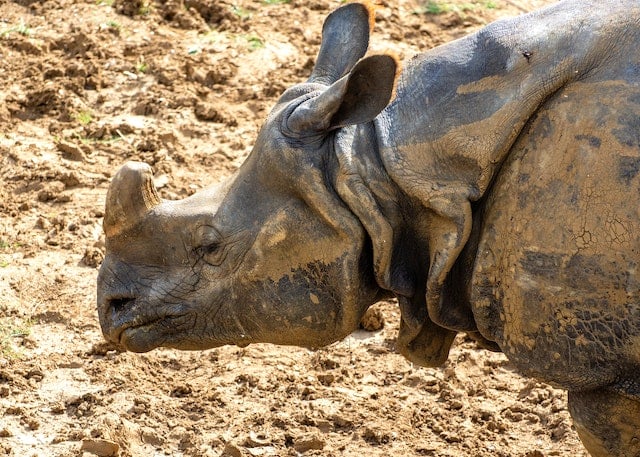
Scientific Name: Rhinoceros sondaicus
The Javan Rhinoceros, also widely recognized as the Sunda Rhino, or one-horned rhino, is a unique species in the family Rhinocerotidae. Their horns are typically shorter than 25 centimeters, smaller than other rhinoceros species.
There is currently only one Javan rhinoceros population in the world, located in the Ujung Kulon National Park in western Java, Indonesia.
This species is dark gray and has a solo horn up to 10 inches long. Its skin has quite a few loose wrinkles that resemble armor plating. The Javan rhino resembles the closely related one-horned rhinoceros, but has a significantly smaller head and less visible skin folds.
#16 Chinese Pangolin
Scientific Name: Manis pentadactyla
All Asian Pangolin populations have recently experienced terrible losses. Sadly these damages are estimated to continue over the next few years. They are hunted all across Asia to export to China, primarily for therapeutic reasons, in addition to their meat and furs.
Manis pentadactyla is the most endangered subspecies because it is the easiest to capture. Unlike all the other tree-dwelling pangolins, the Chinese pangolin resides in distinct cracks and crevices that hunters can quickly identify and excavate to capture the animals.
#17 Giant Panda

Scientific Name: Ailuropoda melanoleuca
Giant Panda’s have almost become an iconic symbol of Asia, and it is widely know that they are one of the most endangered animals.
Giant Pandas rely entirely on bamboo forests, and in the old days, they could wander from region to region in search of adequate quantities of food. The combined effect of land clearing for agriculture and the fragmentation of their native range has resulted in a smaller Panda population.
Illegal hunting was once the main danger to the Giant Panda, although there has been a dramatic reduction in the past few years. China has increased security for the Panda’s native surroundings, but there is no solid evidence that their community will be capable of recovering in the wild.
#18 Ganges River Dolphin
Scientific Name: Platanista gangetica
Scientists first identified the Ganges River Dolphin in 1801. Ganges River Dolphins first lived in Nepal, India, and Bangladesh’s Ganga river and Karnaphuli-Sangu river systems. However, this species has become endangered in most of its original distribution ranges.
The Ganges river dolphin is blind and strictly lives in freshwater. They catch and kill by emitting high-frequency sounds that bounce off of fish and other prey, allowing them to mentally “perceive” an image.
They are typically observed alone or in small clusters, and a mother and calf will usually travel together. Calves are born chocolate brown and develop gray-brown hairless skin as grownups. Females are larger than males and produce only one calf every two and three years.
#19 Asiatic Black Bear
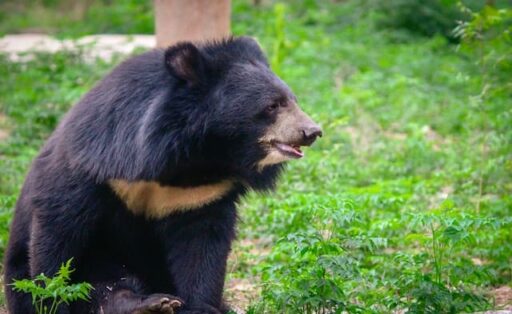
Scientific Name: Ursus thibetanus
The IUCN Red List classifies Asiatic Black Bears as Vulnerable species in their natural habitat, with the possibility of extinction in the coming years if nothing changes.
Populations of the Asiatic Black Bear have declined by up to 49% in the last 30 years alone. Even though no official figures are present, experts say there are currently less than 50,000 black bears in the wild today.
Although poaching is prohibited all across their native range – excluding Japan, where statistics are rising – Asiatic Black Bears are still vigorously attacked by hunting and habitat loss. Equally they are capture for pets, sport, or to dedicate the remainder of their lives in the suffering at a bile farm.
#20 Mekong Giant Catfish
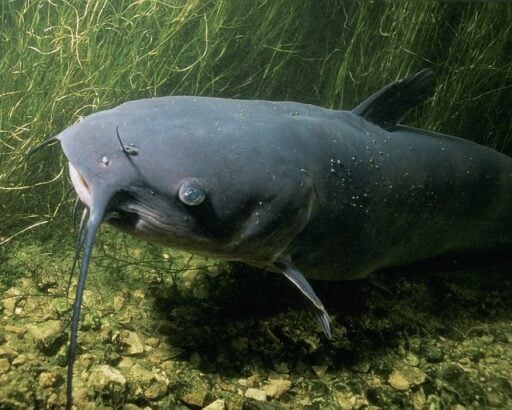
Scientific Name:Pangasianodon gigas
Only a few hundred individuals are left of this species. This is determined by the number of captured fisheries rather than a population parameter estimate.
Public investment, illegal fishing, environmental damage, mineral runoff, and irrigation projects all appear to be the guilty parties to its decline. Environments are also disintegrating, making it more challenging for fish to nest during the breeding season.
The IUCN Red List currently lists the Mekong giant catfish as a highly endangered species. Conservation groups have repeatedly tried to reproduce this fish in artificial ponds to preserve the entire species. Still, all attempts to reintroduce it into the wild have failed.
#21 Whale Shark
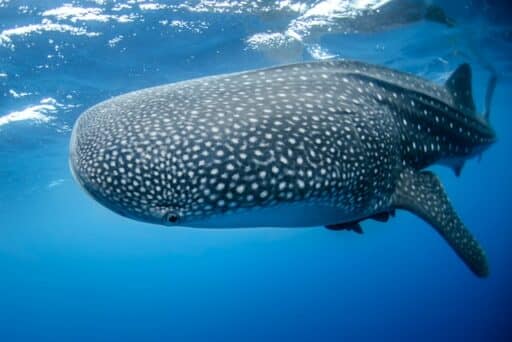
Scientific Name: Rhincodon Typus
Other shark species and giant oceanic wild animals are among the leading whale shark predators. Great white sharks, tiger sharks, and orcas all prey on young and smaller sharks. However, such animals rarely attack giant whale sharks because they are too large for predators to contest.
Humans are also another danger to the existence of these sharks. In some instances, humans kill them by capturing them in fishing nets, where they usually die. These massive fish are still preyed on in certain countries for food, oil, and their fins.
These sharks’ figures have been declining, and the International Union for the Conservation of Nature (IUCN) listed them as threatened with extinction in 2016.
#22 Sunda Rhinoceros
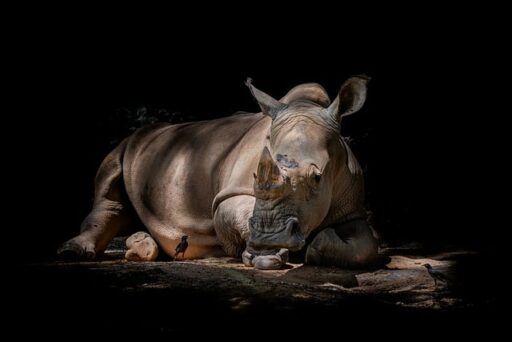
Scientific Name: Rhinoceros sondaicus
The Sunda Rhino was killed and nearly eradicated in the nineteenth and twentieth centuries, and now persists only in two isolated locations.
There are now fewer than a hundred exotic Rhinos. About 40 to 60 on the west portion of the island of Java and another smaller minority in Vietnam’s Cat Tien National Park.
The population in Vietnam consists of as little as six animals, and no one has recently been witnessed mating. All the alive animals currently may be too old to reproduce or are all of the same sex.
There are reportedly no Sunda Rhinos in confinement, and there have only ever been 22 in zoos, with the last one dying inside an Australian zoo nearly 100 years ago.
Numerous attempts to captively breed Sumatran Rhinos in the late twentieth century miserably failed. Moreover, such a pricey experiments are unlikely to create a sustainable Javan Rhino breeding program. The species will almost certainly never recover and will become extinct.
#23 Amur Leopard
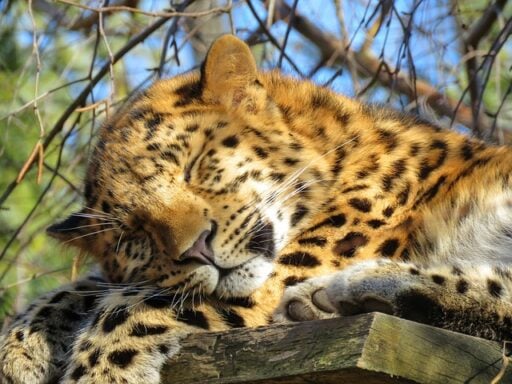
Scientific Name: Panthera pardus Orientalis
The Amur Leopard lives alone. It is agile and strong, and hides incomplete kills so that other predators do not take them. Some males remain with females after breeding and may even assist with child-rearing.
Sometimes several males will pursue and fight for a female. They can survive for 10-15 years in the wild and up to 20 years in captivity. The Far East leopard, Manchurian, and Korean leopard, are all different names for the Amur Leopard.
The Final Word
Animals on the verge of extinction are considered endangered species. The leading causes of their endangerment are habitat loss and degradation, pollution, and climate change. Biodiversity is crucial for healthy ecological systems and our human existence. It is crucial that we alter our behaviour if there is to be any chance of saving the most endangered animals in Asia, as well as the rest of the world.
Thank you for reading this article about the most endangered animals in Asia! For even more information about endangered animals read our article on the 11 Most Endangered Whales.
- Chicago Cat Jumps From 5th Floor of Burning Building and Survives - April 22, 2024
- The Cruelest Contest in the World: Rattlesnake Round-Ups - April 21, 2024
- Rare Footage: Wild Fox and Pet Cat Play-Date - April 21, 2024

